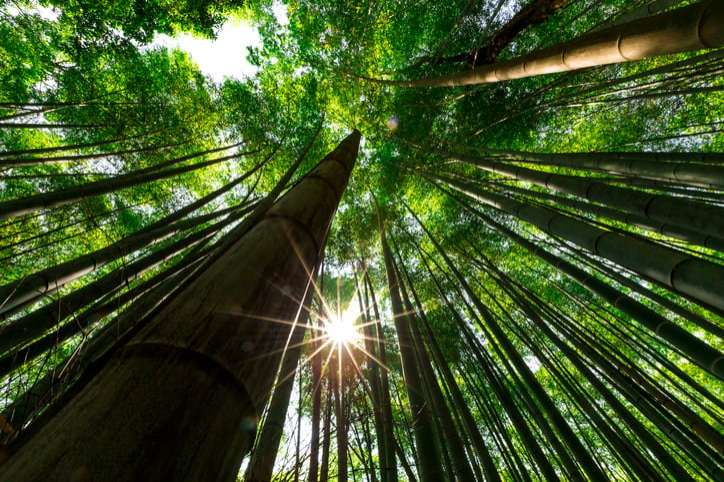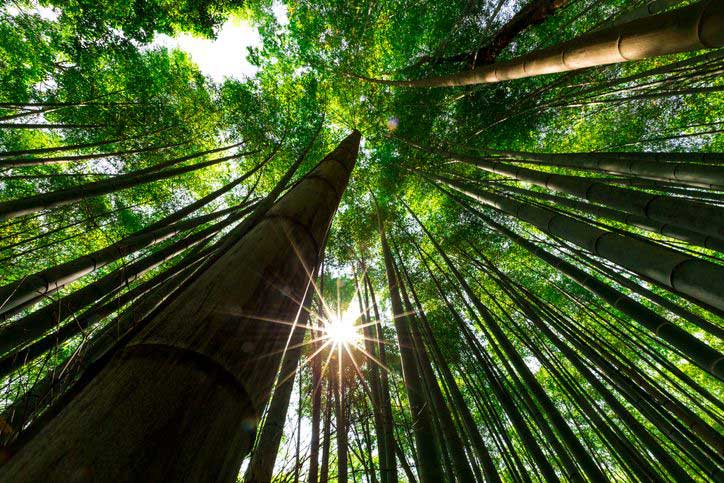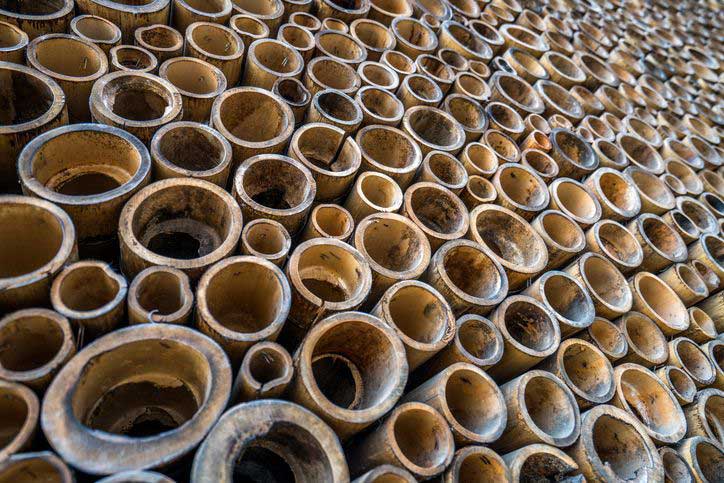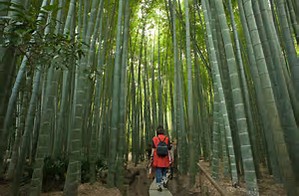Who would have ever thought that grass would become the next big flooring trend? It gives a whole new meaning to the phrase “going green.” They don’t call grass “God’s carpet” for nothing! But choosing grass-based, eco-friendly flooring does not mean bringing your lush lawn indoors to the family room. It means choosing bamboo flooring – specifically, Moso bamboo flooring.
Yes, bamboo actually is grass! Bamboo floors are often referred to as an alternative hardwood, but names can be deceiving. In fact, bamboo’s qualities as a grass contribute to its resistant and eco-friendly properties. Moso bamboo floors have these added benefits while having the look and appeal of traditional hardwoods.
If you want the best when it comes to bamboo flooring, here are 3 reasons that make Moso bamboo the better flooring choice.
1. Advantages:
Moso is not your backyard variety of bamboo. When Moso matures over the course of about 5-6 years, it produces the densest and hardest fibers of any other bamboo species. Although too stiff to be used in something like basket weaving, the strength of Moso makes it perfect for a product that needs to withstand many years of foot traffic.
- Durable enough for heavy-duty flooring applications
- Less shrinkage and swelling results in a more stable floor
- It’s the only bamboo species suitable to make strand woven bamboo flooring, which is the hardest wood flooring in the market, about 2-3X harder than oak and other common hardwoods.
- ISO 9001 certified product guarantees quality management standards of a product that consistently meets or exceeds customer expectations and satisfaction.
- ISO 14001 certified product to assure consumers of product sourcing according to international environmental management standards
- contributor as a low emission, a natural product manufactured with specialty adhesives that contain no added urea-formaldehyde
2. Green Features:
What makes Moso bamboo different from other bamboo species? There are defining features of this giant bamboo species which makes it perfectly suited as a premium green flooring option:
- CO2 Neutral: Moso outperforms all other bamboos and hardwood varieties in carbon dioxide absorption and oxygen production.
- Endless Resource: Annual harvest of mature stems does not harm the mother plant.
- Rapid Regeneration: Moso is the most rapidly growing plant on the planet. It grows at an amazing speed of about 1 meter daily.
- Building Credits: As a rapidly renewing building resource material, Moso qualifies for LEED credits.
3. Moso Bamboo’s Longevity:
Because of its incredible durability when used in stranded bamboo flooring, products made from Moso rarely, if ever, need to be refinished or replaced.
Moso Origins:
Since 20% of the entire world’s bamboo grows in China, it’s no big surprise that Moso is native to China. Because of consumer demand for green-certified products, China’s bamboo industry is committed to managing commercial bamboo groves, according to the Forest Stewardship Council (FSC®). Conscientious cultivators produce plants with features like:
- Stems that reach 40-80 feet in height when mature
- Stems with a base diameter of 4-8 inches when mature
- Large, green canes topped with feathery leaves.
- Variegated stem color patterns on rare varieties
- Groves with a foliage canopy beginning about 30-40 feet above the base
- Young plants featuring a bluish-green hue with a powdery aspect
A Moso grove is an impressive sight. Walking through a grove of Moso is like traipsing through an old conifer forest. Lush foliage overhead blocks out most of the sunlight, but some sunlight can be seen winking through as a breeze creates movement among bamboo leaves.
Species Specifics:
There are many different species in the bamboo family, and each has its own unique qualities. When it comes to Moso bamboo, much is associated with the name. In fact, there are actually many names associated with Moso:
- Phyllostachys pubescens and Phyllostachys edulis are interchangeable scientific names of Moso bamboo.
- Rare, distinctive varieties of Moso have beautiful color variations. These varieties are often referred to as tortoiseshell bamboo.
- Edulis refers to the edible shoots.
- Pubenscens refers to the velvety, hairy rings that grow around the joints of bamboo stalks. (Close-up bamboo)
- The literal translation of the Chinese mao zhu, from which Moso is derived, means “hairy bamboo.”
The Other Bamboo(s):
It’s important to be able to recognize certain bamboo varieties that are identified with particular uses. You wouldn’t want to make a mistake and get something other than Moso for your new bamboo floor. In addition to Moso, here are the top 5 bamboo species commercially used today:
- Female Bamboo (Bambusa balloon) originates in India and is widely used to manufacture paper pulp and wood chips.
- Giant (Indian) Thorny Bamboo (Bambusa bamboos) originates in Southeast Asia and is used to construct roofing, furniture, and marine craft.
- Spiny Bamboo (Bambusa blumeana) originates in Malaysia and Indonesia. It is used to craft housewares, cooking utensils, and baskets.
- Bambusa polymorpha originates in Bangladesh, Myanmar, and Thailand. It is used to manufacture baskets, furniture, and paper pulp.
- Common Bamboo (Bambusa vulgaris) originates in China and Madagascar. It is primarily used to manufacture paper pulp and construct homes, musical instruments, and marine craft.
Choose Moso Bamboo:
Consumers who want to make a flooring choice that is equally green and stylish making it a Moso choice. Moso bamboo flooring is in demand across Europe as well as the US. Talk to a bamboo flooring specialist at Ambient® Bamboo Floors (866-710-7070) today and get a quote for your flooring upgrade.
Last Updated: 1/10/2022

About the Author
Jen is your go-to guru for crafting a cozy, green cocoon. 🪴 Her dive into sustainable building wasn’t just about saving the planet—it started as a mission to make family movie nights eco-friendly (and to ensure the popcorn was the only thing getting heated!). With a knack for breaking down the jargon, Jen turns eco-lingo into everyday language. Swing by the Green Living blog for a mix of earth-loving advice and home improvement hacks. Whether you’re just dipping your toes into green waters or you’ve been swimming in the deep end of DIY projects, Jen’s here to guide, giggle, and remind you that every eco-choice is a step towards a planet that thanks you… and maybe even sends a rainbow your way! 🌈





